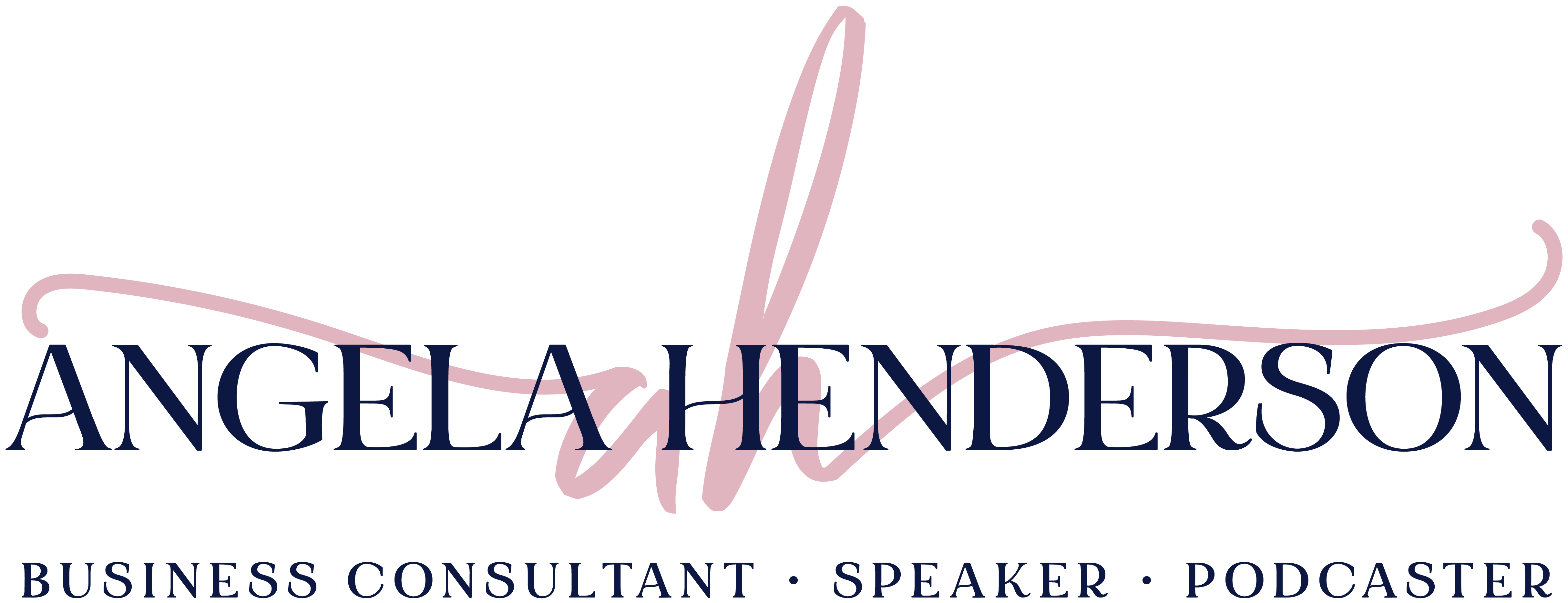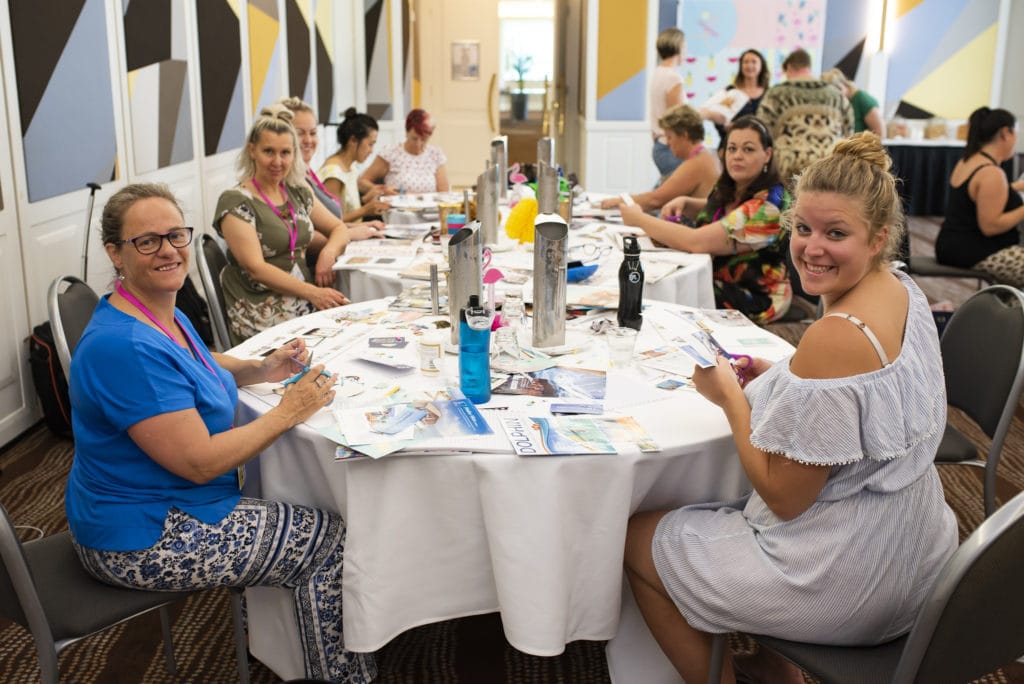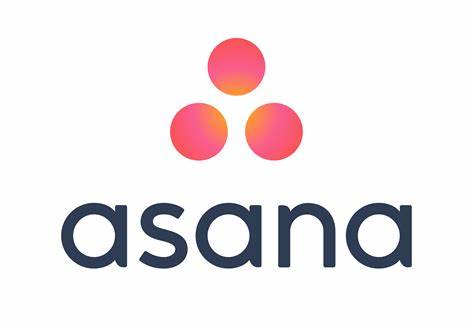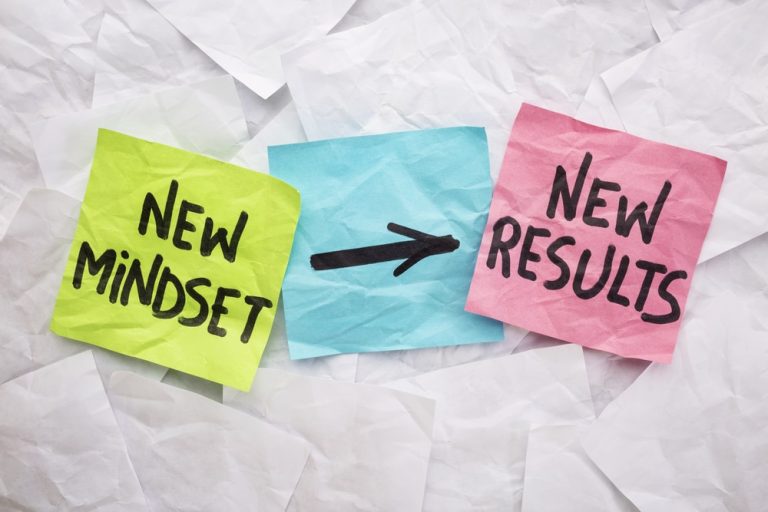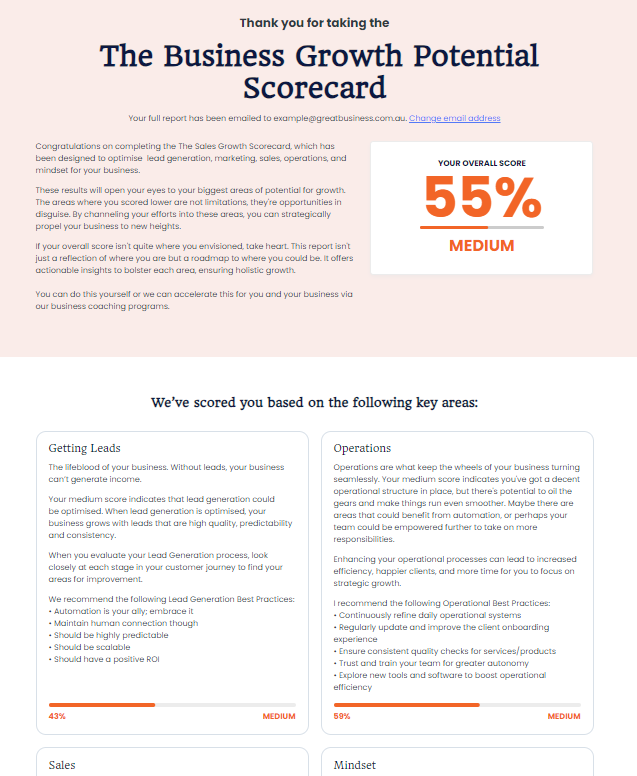When it comes to business planning, a creative and visually engaging approach you might not have considered is creating a business plan vision board.
This practical tool is a graphic representation of your business goals, allowing you to literally visualise your ambitions and the path towards them. Using a vision board for your business is like having a roadmap to success that you can glance at daily.
But why is having such a board important? For starters, it keeps your objectives front and centre, reducing the chance of straying from your core business goals.
Plus, a vision board brings your aspirations to life in a tangible way, making them seem more achievable. With it, you’re not only outlining what you want to achieve but also instilling a sense of motivation and positivity that can power you through the entrepreneurial journey.
What is a Vision Board for Business?
In simple terms, a vision board for business is a physical or digital collage of images, quotes, and symbols that represent your business’s future goals. Think of it as a visual manifestation of your business plan, which usually might be text-heavy and complex.
When creating this board, you would collect pictures and words that resonate with what you hope to achieve in your business. It could include everything from the type of office space you want to have, the awards you aspire to win, the products or services you aim to launch, to the kind of work-life balance you wish to maintain.
A business vision board goes beyond the traditional business plan by incorporating the power of visualisation. The images, phrases, and symbols you choose are designed to inspire, motivate, and remind you of your mission.
As such, it’s more than just a collage—it’s a personalised and inspirational tool that manifests your dreams into reality.
In addition to providing a clear picture of your business goals, it’s also promoting positive thinking, perseverance, and resilience, all of which are crucial elements for the success of any small business.
Why Does a Vision Board Work for Business?
To truly understand the power of a vision board for your business, we need to dive deep into the psychology behind it and explore the evidence supporting its effectiveness. Plus, it’s also quite inspiring to learn from successful entrepreneurs who have used this tool to reach their goals.
The Psychological Aspect of Visualisation
First, let’s focus on the psychological aspect. Visualisation is a well-documented psychological technique where you mentally rehearse or imagine achieving a specific goal.
By regularly visualising our goals, our brains become trained to recognise what we need to do to achieve them. Essentially, it primes our brains to seize opportunities that will help us reach those targets.
Evidence Supporting the Effectiveness of Visualisation
In terms of scientific evidence, numerous studies have demonstrated the effectiveness of visualisation.
Research in the field of neuropsychology has shown that the brain doesn’t distinguish between real and imagined experiences, meaning the act of visualising success can trick your brain into believing that success is attainable, thereby increasing motivation and confidence.
For instance, a study published in the Journal of Consulting Psychology found that unemployed people who used visualisation were more likely to find jobs than those who didn’t.
This same principle can be applied to businesses. Visualising your business goals can motivate you to take necessary actions, ultimately leading to higher chances of achieving those goals.
Real-Life Examples of Successful Entrepreneurs Who Use Vision Boards
The effectiveness of vision boards isn’t just limited to psychology and studies – real-life examples abound. Many successful entrepreneurs credit part of their success to the use of vision boards.
1. Oprah Winfrey
The legendary talk show host and media mogul Oprah Winfrey has repeatedly spoken about how her vision board helped her visualise and achieve her dreams of success. She even has a dedicated room in her home for her vision board, which she updates regularly.
2. Jen Sincero
Another good example is Jen Sincero. This bestselling author and motivational speaker also utilised vision boards to stay focused on her career goals. She says her vision board helps her visualise the life she wants to create, which keeps her driven and inspired.
3. Gary Vaynerchuk
Gary Vaynerchuk is an American entrepreneur, author, speaker, and Internet personality. Also known as Gary Vee, he uses vision boards to stay ahead of the curve in the ever-changing business world. His vision board keeps him inspired and encourages him to think big.
4. Dwayne “The Rock” Johnson
Last but certainly not least, we have Dwayne “The Rock” Johnson. This renowned actor, producer, and businessman has spoken about the importance of vision boards in his life. He said that he created a vision board when he was just starting out in his career, and it helped him to stay focused and motivated on his goals.
These examples illustrate that no matter the industry or individual goals, vision boards can play a crucial role in realising dreams and maintaining motivation.
What Should You Put on Your Vision Board?
Creating your own business plan vision board is an exciting and empowering process. But what should you actually put on your vision board?
The key lies in understanding your clear, defined goals, finding personal sources of inspiration, and then bringing it all together visually.
Why Do You Need Clear, Defined Goals?
The first and most important element of your vision board should be your goals. And not just any goals—they need to be clear, well-defined, and realistically achievable.
Whether it’s expanding to new markets, launching a new product, increasing your revenue by a certain percentage, or improving customer satisfaction, each goal should be specific and measurable.
These goals are the ‘north star’ of your vision board—the key points that every other element on the board should align with.
The Importance of Finding Personal Sources of Inspiration
Once your goals are clear, it’s time to delve into the more personal side of your vision board—the sources of inspiration. These can be quotes that motivate you, images that resonate with you, or symbols that mean something significant to you.
This part of your vision board is what makes it uniquely yours. It reflects your individual journey, values, and ambitions.
What Should Go on the Vision Board?
When it comes to what actually goes on your vision board, the sky’s the limit.
For example, if one of your goals is to expand your business to new locations, you might include a picture of the city or country where you want to establish your presence. If you’re aiming to win a business award, find an image of that award and put it on your board.
Other items could include inspirational quotes that keep you motivated, images of people you admire in your industry, or symbols representing personal growth and success.
You might even include pictures of the lifestyle you’re working towards—like a balanced work-life schedule or more time for leisure and family.
Remember, this is your vision, your future. So, make your vision board as unique, bold, and inspiring as your aspirations are.
What Do You Need to Make Your Business Vision Board?
Creating a vision board can be a fun, enlightening, and inspiring process. To get started, here’s a checklist of my suggested essentials you’ll need:
- Board: The foundation of your vision board. This could be a cork board, poster board, or even a digital board on platforms like Pinterest. Choose whatever medium feels best for you. If you prefer something physical that you can touch, a cork or poster board could be ideal. But if you like to keep things virtual and easily accessible, a digital board may be the way to go.
- Images, Quotes, Symbols: These are the visual representations of your goals and aspirations. You can cut images from magazines, print them from the internet, or even create your own. For digital boards, you can use images and graphics found online. Remember, these should resonate with your business goals and personal values.
- Adhesives: If you’re creating a physical board, you’ll need something to stick your images and quotes onto the board. This could be glue, pins, or sticky tape, depending on the type of board you’re using.
- Scissors: You’ll need scissors if you’re using physical images or quotes and need to cut them out.
- Markers, Stickers, and Decorative Items: To add a personalised touch to your vision board, you might want to include coloured markers, stickers, or any other decorative items that inspire you. These can be used to write down specific goals, to add emphasis, or simply to make your board more visually appealing.
- Your Goals: This might seem obvious, but it’s essential to have a clear idea of your business goals before you start. These will guide the creation of your vision board and help you choose the most suitable images, quotes, and symbols.
- A Quiet Space and Time: Lastly, ensure you have a quiet space and dedicated time to work on your vision board. It’s a process that requires thought, introspection, and creativity, so it’s best done when you’re not rushed or distracted.
How to Create a Business Plan Vision Board (Step-by-Step Guide)
Creating a business plan vision board, or as some prefer to call it, a business vision board, may seem overwhelming at first, but with a structured step-by-step approach, it can be an enjoyable and rewarding process.
The following are my tried-and-tested steps on how to create a business vision board.
Step 1: Know Your Goals
Before anything else, you must clearly define your business goals. These should be specific, measurable, attainable, relevant, and time-bound (SMART).
For example, instead of saying, “I want to grow my business,” you might say, “I want to increase my business revenue by 30% in the next year.”
Take the time to visualise each goal: How will your business look when this goal is achieved? How will it feel? Who will be impacted, and how?
The more detailed your visualisations, the more potent your vision board will be.
Step 2: Understand Your Inspirations
What motivates you? What are the things that spark passion and drive in you? It could be a particular business leader you admire, a quote that gets you fired up, or the prospect of achieving a work-life balance.
Understanding these sources of inspiration will help you select images, quotes, and symbols that truly resonate with you for your vision board.
Step 3: Collect Your Images and Words
Now comes the fun part—collecting your materials. Start looking for images, quotes, and symbols that align with your goals and inspirations.
These can be cut from magazines, printed from the internet, or even drawn by hand. Remember, these elements should serve as a constant reminder of where you’re headed.
Also, don’t limit yourself to just business-related materials. If part of your goal is to have more time with family or to achieve a certain lifestyle, find images that represent these aspects too. The vision board should encompass all parts of your aspirations.
Step 4: Assemble Your Vision Board
It’s time to bring your vision to life. Start arranging your images and words on your board.
There’s no right or wrong way to do this—it can be as structured or as free-flowing as you want it to be. You might choose to group similar goals together, or you might prefer a more spontaneous layout.
As you arrange your materials, think about the relationships between your goals. How does one goal lead to another? How might achieving one goal impact another area of your business or life?
This can help you create a vision board that truly reflects your holistic vision for your future.
Step 5: Display Your Board Where You Work
Once you’ve assembled your vision board, place it somewhere you’ll see it often. This could be in your office, at your workspace at home, or even as a digital background if you’ve created it online.
The key is to ensure that it’s visible to provide constant motivation and reminders of your goals. Each time you glance at your vision board, it should serve as a nudge, pushing you towards your aspirations.
How Often Should You Refresh Your Vision Board?
One common question I get asked is, “How often should I update my vision board?”
The answer? As often as your vision evolves. Your vision board is a dynamic, living document of your dreams and goals, and it should grow and change as you and your business do.
For some, updating their vision board annually may be enough. They set their goals for the year, and those remain fairly consistent. For others, particularly in rapidly changing industries or for businesses in their early stages, updates might be needed every quarter or even monthly.
Keep in mind that updating your vision board doesn’t always mean a complete overhaul. Sometimes, it’s a matter of adjusting a goal, replacing an image, or even just shifting items around to reflect a change in priorities.
The most important thing is that your vision board remains a true reflection of your current aspirations and continues to inspire and motivate you.
The Role of a Business Coach in Realising Your Vision
Creating a vision board is a significant first step towards achieving your business goals. But sometimes, you may need a bit of extra support in making that vision a reality. This is where a business coach can make a real difference.
A business coach is like your personal navigator on the journey towards your goals. They help clarify your vision, making sure it’s not only aspirational but also achievable. They challenge you, support you, and hold you accountable, increasing the likelihood of your success.
For instance, let’s say one of your vision board goals is to expand your business into a new market. A business coach can provide valuable insights on potential challenges, help you develop a robust strategy, and guide you through the implementation process.
Or, if you’re aiming to improve work-life balance, a business coach can support you in setting boundaries, improving time management, and helping you make strategic decisions that align with this goal.
In essence, a business coach helps turn the dreams on your vision board into tangible, actionable steps, thereby accelerating your path to success.
Whether you’re facing a particular challenge or you simply want to keep your business on the winning track, a business coach can be an invaluable asset in realising your vision.
Where to From Here
I’ve covered quite a journey together, delving into the concept of a business plan vision board, its benefits, and how to create a vision board for businesses of your own. I’ve established that this isn’t just a fun and creative process but a powerful tool for visualising and achieving your business goals.
From defining your aspirations to selecting inspiring images and assembling them into a vision, every step has its significance in the creation of your unique vision board.
So, where to from here? It’s time for action!
As you move forward with the insights from this article, check out my Yearly Goal Planner Workbook. This planner is designed to complement your vision board, helping you set actionable steps and track your progress throughout the year.
Remember, the true value of a vision board lies in its power to keep your dreams and goals front of mind, acting as a constant source of motivation and inspiration. As your business evolves, so should your vision board.
Stay focused, stay inspired, and here’s to realise your vision, one goal at a time!
Have a great day,
Angela
Sharing is caring!
